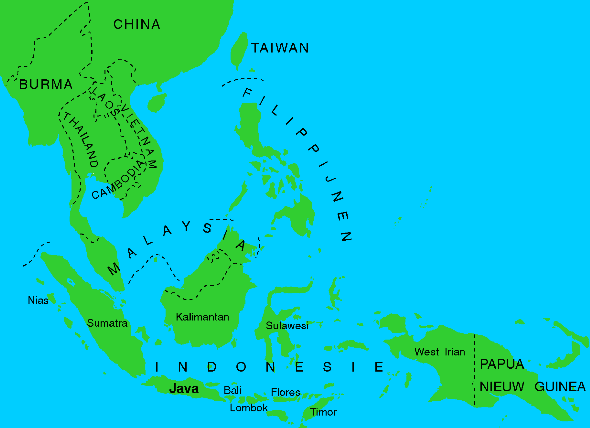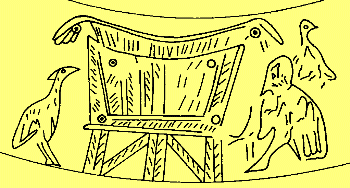![]()
| Chapter 2 | |
| The Area | |
Introduction |
|
| Here will be given an overview of the discussed region. After that
a short introduction on the origin of the house in South East Asia follows. |
|
The Region South East Asia and Java |
|
| South East Asia The ancestors of the inhabitants of Java and all other islands between Formosa and New Zealand, Easter Island and Madagascar probably came from the South East Asian mainland. (Cambodia, Thailand) (Fruin-Mees, 1920: 3) This Area consisted in the early historical period (400 - 1500 AD) mainly of states with a Hindu-Buddhist culture. Between 1500 and 1700 AD there is a transitional period to the Islam states and cultures. On the island Bali however, the Hindu-Buddhist culture exists until today. (Hinzler, 1988: 19) Figure 2-1 shows the geography of South East Asia. |
|
 |
|
| Figure 2-1: Map of South East Asia |
|
| Java Because of the extreme wealth of archaeological findings, the island of Java is considered, by researchers and novices, as the center of South East Asian archaeology (Hinzler, 1988: 5) |
|
The Origin of the House in South East Asia |
|
| Stone Age In the early Paleolithicum the hunter-gatherers in South East Asia lived probably in the open air and in caves. Also in the Mesolithicum and Epi-Paleolithicum people still lived in these circumstances. Only around 10.000 BC, with the rise of the more sedenterian community, a shift from a natural shelter to a man build shelter occurred; the house. (S°rensen, 1982: 8) The essential element of the house in South East Asia is and was the roof, which protects against sun and rain. (Dumaršay, 1987: 1) |
|
 |
|
| Figure 2-2: Drawings based on prints of the
Indonesian Style Houses, pictured on the Ongbah cave cylinder (S°rensen, 1982:11) |
|
| Bronze Age The Dong Son civilization, named after a site in North Vietnam, covered a great part of South East Asia. This civilization is characterized by bronze cylinders. These cylinders are decorated with figures that sometimes represent architectural constructions. (figure 2-2). These are all pictures of pile-dwellings. A distinction is made between the Mainland' type and the Indonesian' type dwelling. Pictures of the latter are the most frequent. The roofs of both types are curved down in the middle. This shape continued to exist on Sumatra, Sulawesi and for a long time on Java. (Dumaršay, 1987: 2-3 & S°rensen, 1982: 13) Possibly these Indonesian' style dwellings are descended from the mainland, although these houses now are typical for the islands of South East Asia (S°rensen, 1982: 13) |
|
| The evolution of the architecture is, because of the shortage of archaeological material, not well to track down. This is because the wooden houses only last for at maximum two hundred years in the tropical climate. (Waterson, 1990: 1) It is however clear, that certain constructions that appear on the reliefs of the Borobudur (9th century AD) still have the characteristics of the houses of the Dong Son civilization. (Dumaršay, 1987: 4) | |
| In chapter four there will be more on houses depictured on the different temple reliefs | |
Previous Chapter || Back to
Serge's Homepage || Next Chapter
- ę 1994, Serge Mees -